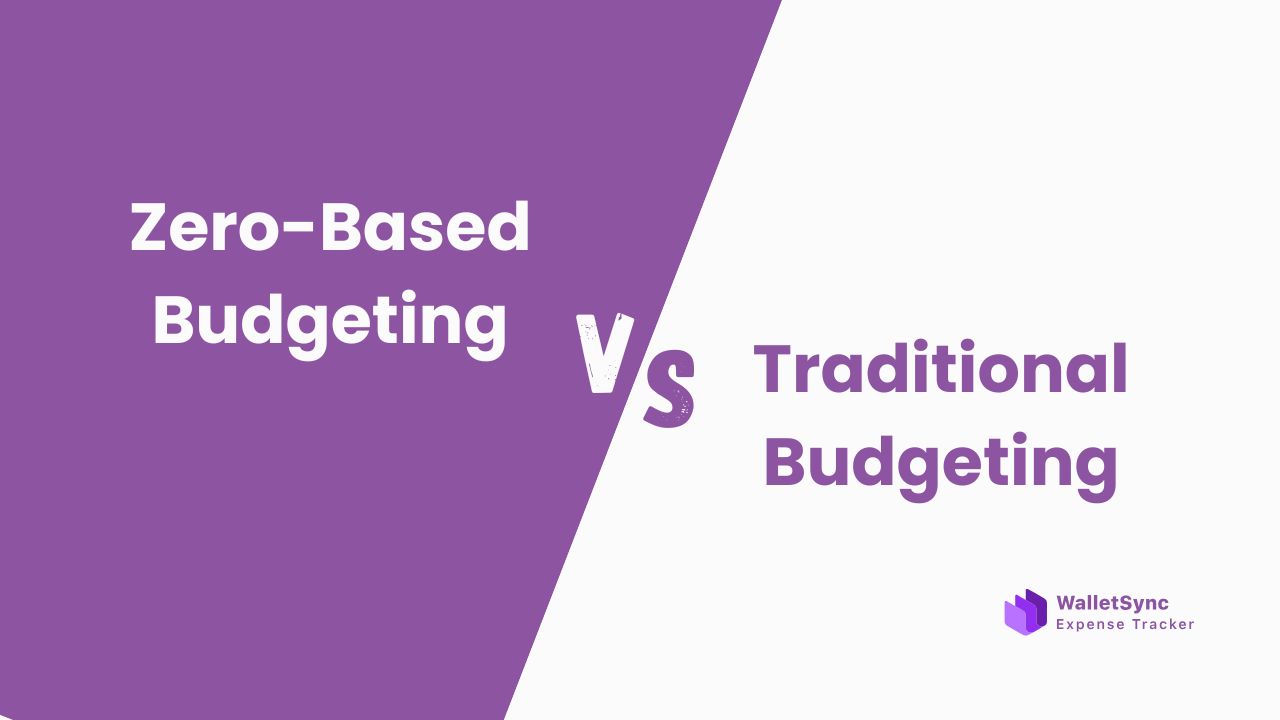You’ve heard the term “zero-based budgeting” and might even be familiar with the more common “traditional budgeting” method. You know they’re two ways to manage money, but what truly separates them? It’s not just a matter of numbers; it’s about the entire philosophy behind how you approach your finances.
While Zero-Based Budgeting (ZBB) and traditional budgeting both help you plan for the future, their paths couldn’t be more different. One starts from a fresh slate every time, while the other builds on history.
In this article, we’ll do a head-to-head comparison to show you the key difference between zero-based budgeting and traditional budgeting.
Zero-Based Budgeting vs Traditional Budgeting
Understanding the differences between these budgeting methods can help you make smarter financial decisions. Each approach has distinct advantages and is suited to different organizational goals and circumstances.
Here are the main differences:
1. The Starting Point: Clean Slate vs. Historical Baseline
This is the most fundamental difference between the two methods.
Zero-Based Budgeting: As the name implies, ZBB starts at zero. At the beginning of each new budgeting period (be it a month, quarter, or year), you’re working with a completely clean slate. Every single expense, from office supplies to marketing campaigns, must be justified and approved from scratch. Nothing gets automatically carried over.
Traditional (Incremental) Budgeting: This method is all about building on the past. You start with the previous period’s budget as your foundation, then make incremental adjustments. Maybe you can add a percentage for inflation or a fixed amount for expected growth. It’s a top-down approach, building from what you’ve always done.
Simply put, ZBB is a bottom-up method, while traditional budgeting is a top-down one.
2. The Philosophy: Efficiency vs. Continuity
The core belief behind each method dictates how you make financial decisions.
Zero-Based Budgeting: ZBB is driven by a deep focus on efficiency and necessity. It forces you to constantly ask a critical question: “Is this expense truly necessary for our current goals?” This intense scrutiny helps you identify and eliminate wasteful spending, ensuring every dollar has a purpose.
Traditional Budgeting: This approach is all about continuity and stability. The underlying assumption is that if an expense was necessary last year, it will be necessary this year, too. While this makes the process predictable, it can also lead to a “use-it-or-lose-it” mentality, where departments spend their entire budget to avoid a reduction in the next cycle.
3. Time and Effort: Intensive vs. Simple
The level of effort required to create and maintain each budget varies dramatically.
Zero-Based Budgeting: ZBB is a much more time-consuming and labor-intensive process, especially when you first implement it. It demands a detailed analysis of every line item, requiring more effort and participation from everyone involved.
Traditional Budgeting: This method is far quicker and simpler to prepare. Since it relies on minor adjustments to past figures, it requires less data analysis and can be a much faster exercise.
4. Resource Allocation: Strategic vs. Historical
How resources are distributed is a key differentiator.
Zero-Based Budgeting: Resources are allocated based on current needs and strategic goals. This approach ensures every dollar is directed toward the most impactful activities, allowing you to be agile and responsive to changing market conditions.
Traditional Budgeting: Resources are allocated based on historical precedent. This can perpetuate inefficient spending patterns. For example, a department that historically received a large budget might continue to do so, even if its role has become less critical to the organization’s goals.
5. Accountability: High vs. Low
The level of ownership and responsibility for spending is a major point of contrast.
Zero-Based Budgeting: ZBB fosters a culture of high accountability. Since every expense must be justified, managers and individuals are directly responsible for their spending. This creates a cost-conscious environment where every expense is linked to a specific outcome.
Traditional Budgeting: Accountability can be lower with this method. When budgets are simply rolled over from year to year, there’s less incentive to scrutinize expenses, which can lead to a less cost-conscious and engaged culture.
Zero-Based vs. Traditional Budgeting: A Quick Comparison Table
The table below provides a quick, at-a-glance comparison of these two popular budgeting methods, highlighting their core differences in a simple, easy-to-understand format.
| Feature |
Zero-Based Budgeting (ZBB) |
Traditional (Incremental) Budgeting |
| Starting Point |
Starts from a “zero base” each period. |
Based on the previous year’s budget. |
| Justification |
Every single expense must be justified. |
Only new or increased expenses are justified. |
| Focus |
Efficiency and necessity; cost control. |
Continuity and stability; ease of use. |
| Resource Allocation |
Based on strategic goals and current needs. |
Based on historical spending and precedent. |
| Time & Effort |
More time-consuming and labor-intensive. |
Less time-consuming and simpler to prepare. |
| Flexibility |
Highly flexible and responsive to change. |
Less flexible; can perpetuate inefficiencies. |
Zero-Based vs. Traditional Budgeting: Which One is Right for You?
The choice between zero-based and traditional budgeting isn’t about finding a “better” method. It’s about finding the right fit for your unique situation.
Choose ZBB if: You need to cut costs, you’re experiencing a major financial change (like a new job or a new business), or you want to align every dollar you spend with a specific, strategic goal. To understand the strengths and trade-offs of this method in detail, check out the advantages and disadvantages of zero-based budgeting.
Choose Traditional Budgeting if: Your financial situation is stable, your expenses are predictable, and you prioritize a simple, quick budgeting process over a deep analysis of your spending.
Ultimately, both methods are tools designed to help you take control of your finances. The best approach is the one that empowers you to make informed decisions and achieve your financial goals.

